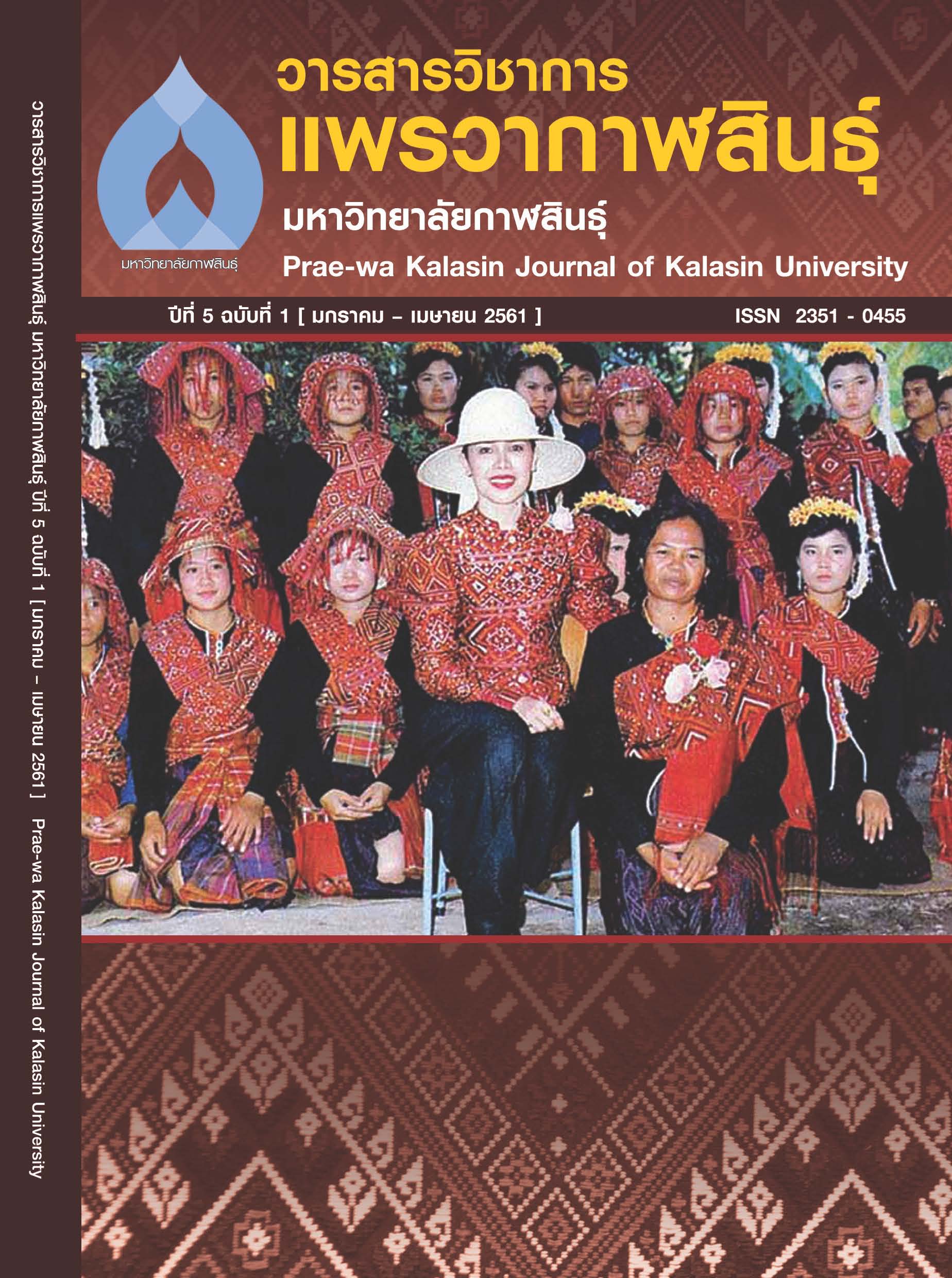Structural and Elemental Analysis of Thai Postures Used for Panjoelmamuad Ceremony in South Eastern of Thailand
Main Article Content
Abstract
The objectives of this research were: 1) to study the historical background of Panjoelmamuad Ceremony, 2) the element and structure of Thai Posture using in ceremony in South Eastern of Thailand. 3) The research methodology was qualitative research by Qualitative Study. The samples were selected by Purposive Sampling including 5 Panjoelmamuad Teachers, 12 ceremony participants, 6 music players, and 5 academics, total of 33 persons. The research has occurred in November 2016 to February 2017. The research instrument was the Interview Form and observation Form . The research findings found that: 1) Panjoelmamuad Ceremony was performed from an ancient age as the sacred ceremony that could not specify the duration which age it was occurred, 2) there were 11 steps which could be classified into 2 elements: the Person, and the Ceremony, 3) there were total of 64 postures, being classified into 5 structures including : 1) the structural pattern of Thai posture for inviting one’s soul concluded total of 8 Thai Postures, 2) the structural pattern of Thai posture for dressing, concluded total of 3 Thai postures, 3) the structural pattern of Thai posture for using the weapon, concluded total of 16 Thai postures, 4) the structural pattern of Thai postures based on meaning of song as well as rhythm of song, concluded total of 30 Thai postures, and 5) the structural pattern of Thai posture for inviting the powerful soul to get rid of various evils to be dismissed.
Article Details
References
Sukumalpong, Kanokon. (2008). Nang-tiam Dancing in House Feeding Ceremony: A Case Study of Bankaleum, Udontani Province. (Master of Education Thesis), Chulalongkorn University.
จิตร ภูมิศักดิ์. (2547). ข้อเท็จจริงว่าด้วยชนชาติขอม. กรุงเทพฯ: มติชน.
Pumisak, Chit. (2004). The Fact of Khmer Ethnic. Bangkok: Matichon.
เชิดศักดิ์ ฉายถวิล. (2555). การแพทย์ทางเลือก : รูปแบบการสืบสานและพัฒนาดนตรีบำบัดโรคในพิธีเรือมมะม็วด ของกลุ่มชาติพันธุ์ไทยเขมรในภาคอีสาน. วิทยานิพนธ์ ปริญญาปรัชญาดุษฎีบัณฑิต, มหาวิทยาลัยมหาสารคาม.
Chaitawil, Cherdsak. (2012). The Alternative Medicine: An Inherited Model and Music Therapy in Reummamuad Ceremony of Thai-Khmer Ethnic Group in Esan Region. Doctor of Philosopher Thesis, Mahasarakam University.
วิโรจน์ เอี่ยมสุข. (2549). การศึกษาความเชื่อในการเข้าทรงมะม็วด : กรณีศึกษาบ้านดงมัน ตำบลคอโค อำเภอเมือง จังหวัดสุรินทร์. คณะมนุษยศาสตร์และสังคมศาสตร์, มหาวิทยาลัยราชภัฏบุรีรัมย์.
Aemsook, Wiroj. (2006). A Study of Mamuad Cpmunication with Spirit : A Case Study of Bandongmun, Koko Sub-district, Muang District, Surin Province. Faculty of Humanities and Social Science, Buriram Rajabhat University.
สมจิตร พ่วงบุตร. (2527). เพลงพื้นเมืองและการละเล่นพื้นเมืองของจังหวัดสุรินทร์. กรุงเทพฯ: กรุงสยามการพิมพ์.
Puangboot, Somchit. (1984). Folk Song and Play of Surin Province. Bangkok: Siam Printing.
สงบ บุญคล้อย. (2522). “การละเล่นพื้นเมืองกันตรึม”. ในสมบัติอีสานใต้. บุรีรัมย์: วิทยาลัยครูบุรีรัมย์.
Boonklao, Sa-ngob. (1979). “Kantruem Folk Playing” In Southern Esan Asset. Buriram: Buriram Teaching College.
อเนก นาวิกมูล. (2531). คนเพลงและเพลงพื้นบ้านภาคกลาง. กรุงเทพฯ: สำนักงานคณะกรรมการ วัฒนธรรมแห่งชาติ กระทรวงศึกษาธิการ.
Nawigmoon, Anek. (1988). Song Player and Folk Song of Central Thailand. Bangkok: Office of National Culture Commission. Ministry of Education.
รายการสัมภาษณ์ (The Lists of Interviewers)
จารุวัฒน์ สุขดี. (ผู้ให้สัมภาษณ์). กีรติ เปาริสาร (ผู้สัมภาษณ์). 7 มีนาคม 2560.
Sookdee, Charuwat. (Interviewee). Paorisan, Keerati. (Interviewer). 7 March 2017.
สำรวม ดีสม. (ผู้ให้สัมภาษณ์). กีรติ เปาริสาร (ผู้สัมภาษณ์). 7 มีนาคม 2560.
Deesom, Samruem. (Interviewee). Paorisan, Keerati. (Interviewer). 7 March 2017.

